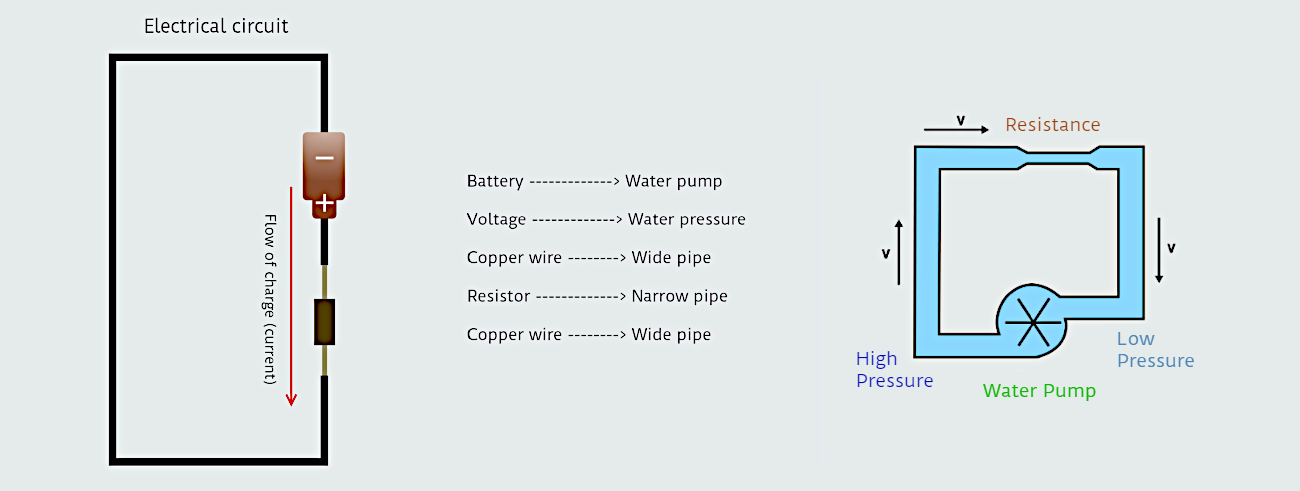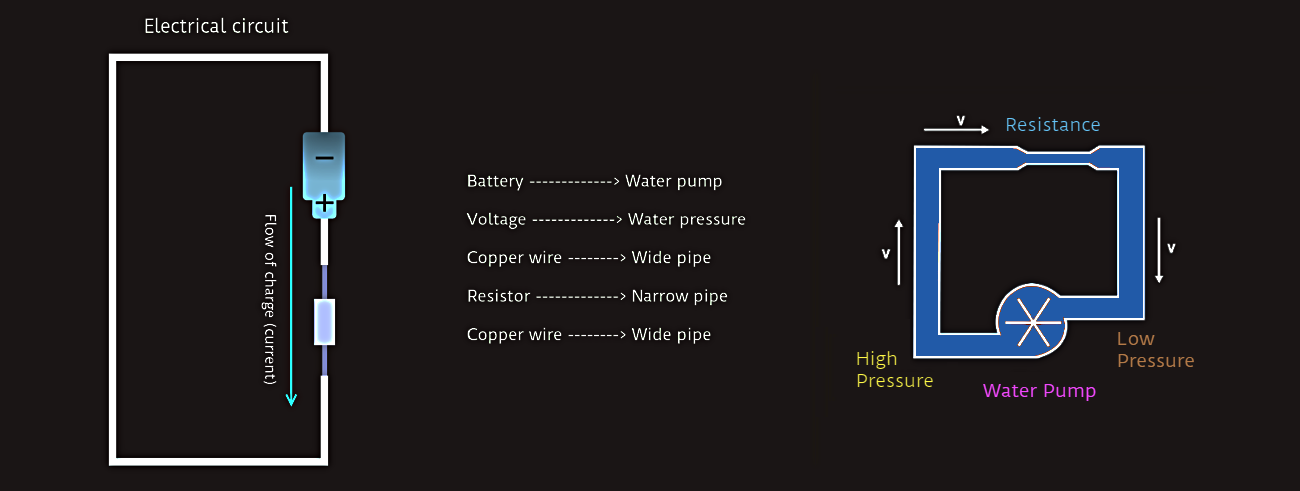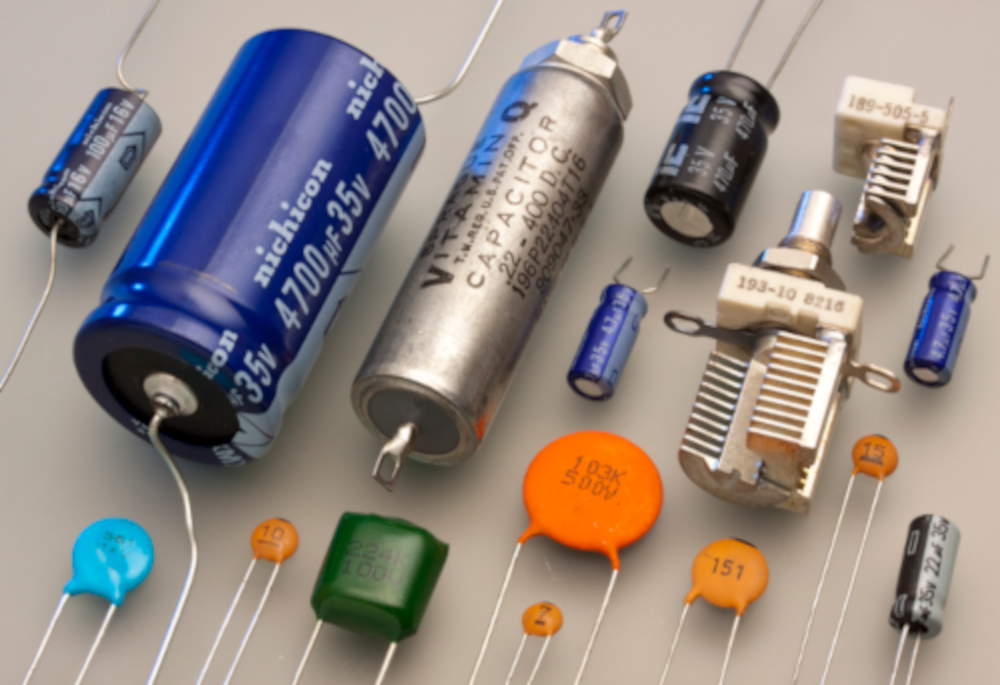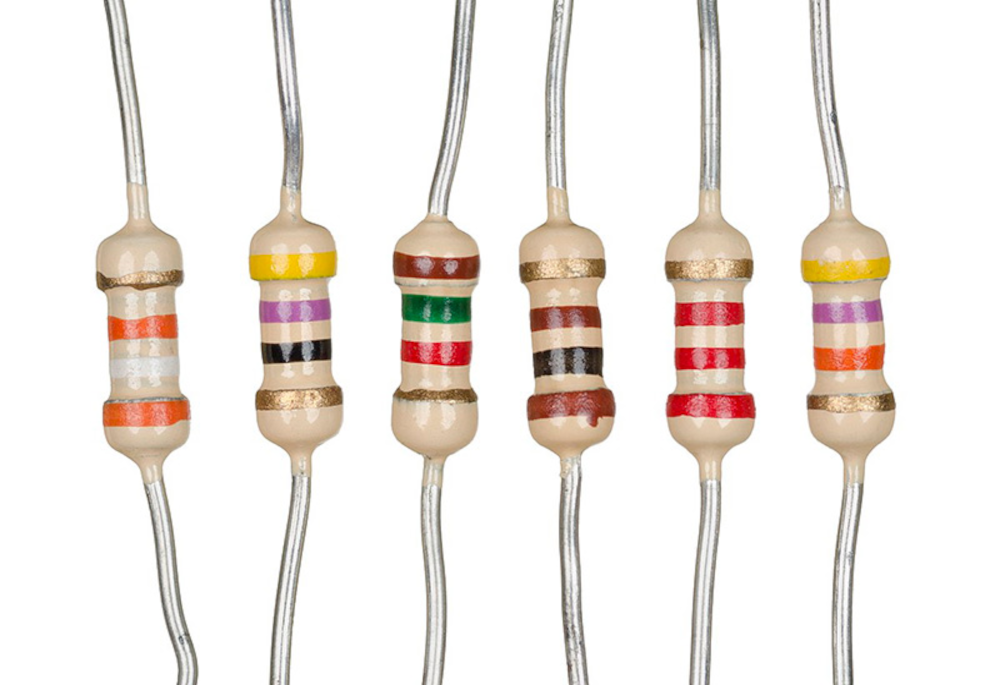Electrical circuits
An electronic circuit is a structure that directs and controls electric current to perform various functions including signal amplification, computation, and data transfer. Computers are devices that follow rules designed by humans, but ultimately computers must behave according to another set of rules: the laws of nature. A computer is a machine, and like all machines, it takes advantage of natural laws to accomplish a task. In particular, modern computers are electronic devices, so the laws of electricity are the natural foundation upon which these devices are built.
We can make analogy with water here; the water pump moves water through a pipe, like a battery moves charge through a circuit. Just as water flows, so does electric charge; we call this current. Water pressure affects the rate at which water flows, and in the same way, voltage affects current — higher voltage means greater current. Water flows freely through a wide pipe, as current does through a copper wire. A narrow pipe restricts the flow of water, just as a resistor restricts current. 

Appliances, lamps, televisions, and other devices that plug directly into a wall socket without an adapter run on AC. Smaller electronics such as laptops and smartphones run on DC. When we charge a device like a smartphone, an adapter converts the AC from a wall socket to the DC that our device needs. Batteries also provide DC.
Though mechanical switches are a good way for humans to interact with circuits, electronic switches allow multiple circuits to interact with each other. In computing devices, we can’t practically use mechanical switches. The inputs to a computer are numerous, and flipping switches to control those inputs isn’t a great design. Also, computing devices need to connect multiple logical circuits together — the output of one circuit needs to become the input of another. To accomplish this, switches need to be electrically, rather than mechanically, controlled. A transistor is a device used to switch or amplify current. We can now build circuit elements that implement logical functions where the inputs and outputs are high and low voltages. Such components are known as logic gates.
Electric circuits are made up of wires and other components, such as light bulbs, transistors, computer chips, and motors. Conductive materials are what make up the wires that connect the components of the circuits. Copper and aluminum are most frequently used as conductors, but gold is sometimes used to attach wires to small electronic chips as well because it has a higher resistance to corrosion. The complexity and the number of components in an electronic circuit may change depending on its application. However, the simplest circuit consists of three elements, including a conducting path, a voltage source, and a load.
Different Types of Circuits
Power circuits work with transferring and controlling large amounts of electricity. Examples of power circuits are power lines, and residential or business wiring systems. The major components of power circuits are generators at one end and lighting systems, heating systems, or household appliances at the other end. Power lines, transformers, and circuit breakers are in between the two. Electronic circuits, on the other hand, are responsible for processing and transmitting the information. These are more along the lines of computers, radios, TVs, radars, and cell phones.
- • Closed circuit has a complete path for current to flow.
- • An open circuit doesn’t have a complete path, which is an indicator that it is not functional.
- • A short circuit is a path of low resistance and can occur when two bare wires in a circuit touch each other.
- • In a series circuit, the same current flows through every component. It's like a string of lights. If one goes out, they all go out; no current will flow, and none of the lights will go on.
- • In a parallel circuit, it's like a blood vessels that branch off from an artery and connect to a vein. It’s the same idea with wires; one acting as the “artery” and one acting as the “vein” with smaller wires attached. The smallest wires have the same voltage applied, but different amounts of current flowing through them, depending on the individual wiring.
Printed Circuit Board
Most electronic appliances require complex electronic circuits. That’s why designers have to arrange tiny electronic components on a circuit board. It comprises a plastic board with connecting copper tracks on one side and lots of holes to affix the components. When the layout of a circuit board is printed chemically onto a plastic board, it is called a printed circuit board or PCB. The purpose of a printed circuit board is to hold an electronic circuit together. When all the different components are attached to it, it is called a printed computer circuit board assembly, or PCBA. A PCB with multiple layers can contain as many as ten stacked PCBs. This allows for the formation of a three-dimensional electronic circuit.
There are several different types of PCBs:
- • Single-sided PCBs - Most commonly used type of PCB used with almost any electronic circuitry.
- • Double-sided PCBs - The components are on both sides of the PCB, used for more complex circuitry, and is slightly more expensive.
- • Multi-Layer PCBs - Combines two double-sided circuits, used in most electronic devices.
- • Rigid PCBs - Made out of thermoplastic material, the most durable, and often used in military technology.
- • Flex Circuits - Uses flexible material in smaller assemblies for simple electronics.
- • Rigid-Flex PCBs - A combination of both the rigid and flex PCBs, providing both flexibility and durability.
- • High-Frequency PCBs - Used for circuits that have fast microprocessors for high productivity computers.
- • Aluminum PCBs - Uses an aluminum backing to add more strength when there is a lot of electromagnetic energy.
Though PCBs can offer a lot of advantages, most modern instruments such as computers and mobiles require complex circuits, having thousands and even millions of components. That’s where integrated circuits come in. They are the tiny electronic circuits that can fit inside a small silicon chip. Jack Kilby invented the first integrated circuit in 1958 at Texas Instruments. The sole purpose of ICs is to increase the efficiency of the electronic devices, while reducing their size and manufacturing cost.
PCB Components
Components soldered onto the PCB are essential for conducting electricity on the boards.
Thanks to modern technology, electronic circuit building process has been completely automated, especially for building ICs and PCBs. The number and arrangement of components in a circuit may vary depending on its complexity. However, it is built using a small number of standard components. Some of the components included on a computer circuit board includes:
- • Transistors are the most important part of an electronic circuit and can be described as tiny switches that are triggered by electric signals. They are the basic building blocks of microchips. Working alongside these are more passive elements like resistors and capacitors.
- • Resistors apply a specific amount of resistance to the current. They transmit the electric current to produce voltage.
- • Capacitor stores electric charge in the board and releases it when power is needed.
- • Inductors store energy as a magnetic field and block interference signals in the board. Small circuits, commonly labeled “micro-electric” don’t use inductors very often.
- • Diodes control the flow of electricity making it only flow in one direction to avoid causing damage.
The most advanced designers of computer circuit boards use computer-aided design programs or CAD. These are the most realistic way to design circuit boards because of the complexity of digital computers - as they use millions of transistors. Engineers use sophisticated software called Electronic Design Automation (EDA) tools to design these complex circuits. These tools simulate and verify the design before it's manufactured, ensuring it will work correctly. EDA tools were initially developed by engineers. It's a classic case of engineers creating tools to make their own work more efficient and manageable. Over time, these tools have become incredibly sophisticated, incorporating advancements in algorithms, machine learning, and computational power. So now, engineers can design, simulate, and verify complex circuits much more quickly and accurately than they could manually.
Packing millions of tiny components into one chip and getting them to work harmoniously is one of the marvels of modern engineering. This process includes: Miniaturization, Photolithography, Design Automation, Layering, Material Science, Testing and Validation. The result we get is a tiny, incredibly complex chip that powers everything from our phone to space rockets.
Capacitor
A capacitor is a passive two-terminal electrical component that can store energy in an electric field electrostatically. In simple terms, it works as a small rechargeable battery that stores electricity. However, unlike a battery, it can charge and discharge in the split of a second.
When we apply a voltage over the two plates or connect them to a source, an electric field develops across the insulator, causing one plate to accumulate positive charge while negative charge gets collected on the other. The capacitor continues to hold its charge even if we disconnect it from the source. The moment we connect it to a load, the stored energy will flow from the capacitor to the load.
Capacitance is the amount of energy stored in a capacitor. The higher the capacitance, the more energy it can store. We can increase the capacitance by moving the plates closer to each other or increasing their size. Alternatively, we can also enhance the insulation qualities to increase the capacitance.
Though capacitors look like batteries, they can perform different types of functions in a circuit such as blocking direct current while allowing alternating current to pass or smooth the output from a power supply. They are also used in electric power transmission systems to stabilize voltage and power flow. One of the most significant functions of a capacitor in the AC systems is power factor correction, without which we can’t provide sufficient amount of starting torque to single phase motors.
If we are using a microcontroller in a circuit to run a specific program, we don’t want its voltage to drop as that will reset the controller. That’s why designers use a capacitor. It can supply the microcontroller with the necessary power for a split second to avoid a restart. In other words, it filters out the noise on the power line and stabilizes the power supply. Unlike a battery, a capacitor releases its charge rapidly. That’s why it is used to provide power to a circuit for a short while. Camera batteries charge the capacitor attached to the flash gun. When we take a flash photograph, the capacitor releases its charge in a split second to generate a flash of light. In a resonant or time-dependent circuit, capacitors are used along with a resistor or inductor as a timing element. The time required to charge and discharge a capacitor determines the operation of the circuit.


Resistor
A resistor is an electrical component that restricts the flow of electrical current in a circuit. The analogy often used to explain its operation is to consider current as water flowing in a hosepipe; a resistor can be considered as a constriction in the pipe that limits the flow of water. It performs a vital function: controlling the voltage and the current in our circuit. In other words, resistors give us control over the design of our circuit.
If we don’t add resistors to a circuit, the current will flow at dangerously high levels. It can overheat other components and possibly damage them. For example, if we connect an LED directly to a battery, it would still work. However, after some time the LED will heat up like a fireball. It will eventually burn as LEDs are less tolerant to heat. But, if we introduce a resistor in the circuit, it will reduce the flow of current to an optimal level. Thus, we can keep the LED on longer without overheating it. Resistors are also used to reduce the voltage to the desired level. Sometimes, a particular part of a circuit such as a microcontroller may need a lower voltage than the circuit itself. This is where a resistor comes in. Resistors are also used in combination with capacitors to build ICs that contain resistor-capacitor arrays in a single chip. They are also known as RC filters or RC networks. They are often used to suppress electromagnetic Interference (EMI) or Radio Frequency Interference (RFI) in various instruments, including input/output ports of computers and laptops, Local Area Networks (LANs), and Wide Area Networks (WANs), among others. They are also used in machine tools, switchgears, motor controllers, automated equipment, industrial appliances, elevators, and escalators.









